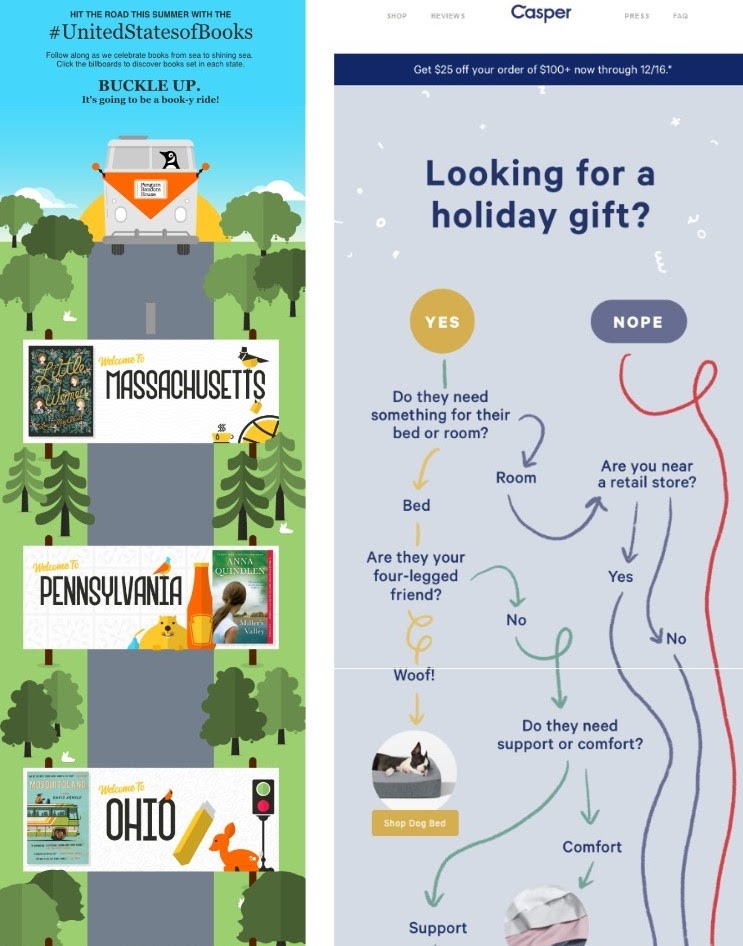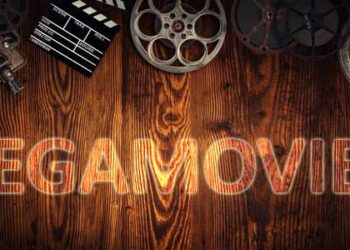Before talking about the advantages of gamified content, let’s first see what gamification means in terms of email marketing. To put it short, gamification is the employment of diverse game-liked design elements and solutions in email campaigns in order to reach deeper engagement, promote brand awareness and, of course, generate sales.
The concept isn’t new to marketing. Gamification has been used widely on websites and social media. However, recently it has made its way into email campaigns in an effort to breathe some fresh air in one of the oldest communication channels.
There is no single definition, rule or restrictions on how gamification can or can not be used in emails. Your imagination and technical possibilities are the only limits. Depending on your campaign type and purpose, it can take any form. By far, the most common are:
- wheel of fortune;
- quiz;
- trivia;
- bingo;
- puzzle;
- reveal a gift;
- spot the difference;
- crossword;
- optical illusion;
- maze;
- find a match
However, there are also many solutions that simply can’t be categorized due to their customized design and uniqueness. Anything that involves gaming tasks can be qualified as gamification content.
Why To Use
The main purpose of gamification is to catch the reader’s attention and prompt them to interact with the particular message as long. And its main advantage is its versatility; it can be employed equally well for B2C and B2B, and suits any industry, from travel agencies to beauty studios. Why?
- Gamification increases the average reading time and, as a result, customer engagement. Gamified content sparks interest, anticipation, and excitement, encouraging people to move on (take a quiz, answer the questions, take a test, scratch for a gift). And if you’ve implemented a really good idea, chances are good the products promoted via this idea will finally be purchased.
- It improves the reading experience, making it more enjoyable. Email is a relatively stagnant channel with few changes over the last years. Of course, there have been many technical improvements, but they mostly invisible to the eye of a regular subscriber. All that people see is good old text, images, and call-to-actions, and game-like elements can spice up this classic recipe.
- It has a sense of novelty. If you have a tight schedule of campaigns, sending four to five per week, it would be nice to mix regular promos with more creative messages, as people get tired of the routine.
- It boosts word of mouth. When you come across something unexpectedly interesting which exceeds your expectations, you want to share it. A campaign that gave you moments of fun will be most likely directed to friends.
- It helps collect customer data. This can be especially useful for subscribers who have signed up some time ago but haven’t made any purchases yet (meaning you can’t analyze their purchase history and website behavior). Ask them to choose a gift in a game and you’ll know what product categories might be of interest to them. And the more data you know, the better you can segment your contact base and send more targeted campaigns.
- Gamification serves as content on its own. Brands that don’t have blogs and don’t run sales very often can use gamified newsletters as an occasion to reach out. When you don’t have much new information, don’t have resources to prepare materials (custom photos/product lookbook/video) for a new campaign, consider using game-like elements to fill in the email template.
As you see, the benefits can be numerous, but there are also things you need to consider. First, every gamification project is a one-time solution. The whole idea of this approach is interest and excitement, and people won’t play the game or take the same test twice. If you plan to invest effort in a complex project, make sure you use it to promote a really good offer to amplify the effect.
Second, to put a complicated project in life, you’ll most probably need a designer. Such elements as a quiz, trivia, or a crossword can be implemented even within a basic responsive template; a more advanced layout requires HTML skills.
How to Use
Before starting crafting any campaign, ask what task it has to complete: offer new products, collect data, redirect to a target page, collect feedback, or simply keep you top of mind. Once you’ve set it up, it will be easier to design the layout, position CTAs, and put a focus on certain elements.
Before starting designing a gamified campaign, make sure that whatever form you choose, it complies with the following characteristics.
- Simple and understandable. It takes several seconds to scan the email and decide whether it’s worth the time. People won’t start doing too complex tasks with long explanations and multiple rules.
- Dynamic. Each click on your quiz or gift hunt should lead somewhere (reveal new word for a promo code, reveal part of a puzzle, open a new window).
- Clear goal. Explain what’s the task of whatever you’re offering: solve the puzzle, find the necessary gift, spot the difference, find out your hair type.
- Reward. A game presupposes there are winners and prizes. If you ask to complete some task (especially if takes time and intellectual effort), you need to give something as a reward, let’s say, % off the next purchase, free download, +1 gift, shipping discount, for example.
- Engaging process. Whatever activity you offer, it should be fun.
To sum up, gamification can be a useful tool in your email marketing arsenal. It’s not a replacement for all other solutions but rather a supplement to the existing strategy. Use game-like elements to spruce up your campaigns, deliver content in a new way, and keep your subscribers engaged and entertained.







